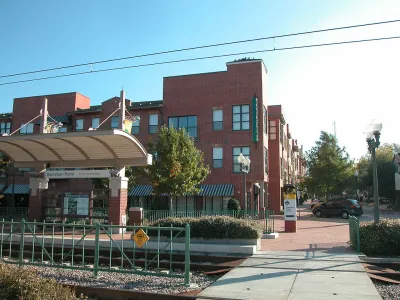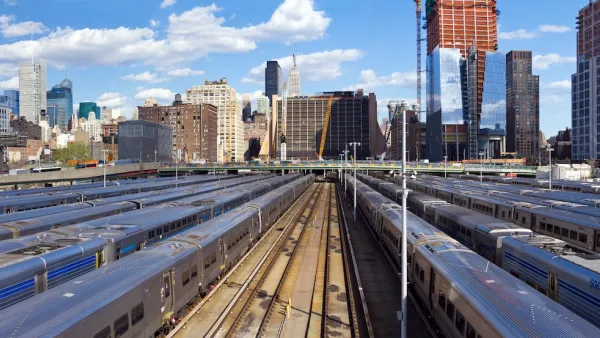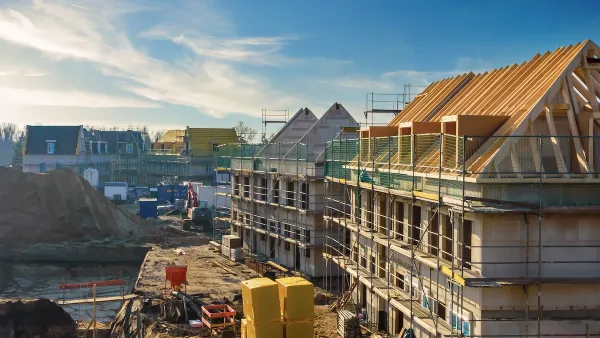No-cost land transfers of underused transportation assets to develop transit-oriented affordable housing could be a game changer for local governments.

Under new guidance from the US Department of Transportation, localities can use assets like land and buildings acquired or improved with federal transit funds to support development of affordable housing, report Jorge González-Hermoso and Yonah Freemark of the Urban Institute.
The new guidelines, called Interim Asset Disposition Guidance, released in October, could help boost housing construction near transit, which has slowed because of increasing development costs and a slow return of transit ridership after the pandemic.
Qualifying transportation assets that are no longer needed for the original purchase can be transferred to local governments, nonprofit organizations, or third-party entities at no cost as long as the properties are used for transit-oriented developments where at least 40 percent of housing units are reserved for low or very low income households. This has huge implications for viability of such projects, as previously transit agencies had to pay back the federal monetary contribution when seeking to transfer assets to other entities.
The Urban Institute speculates a significant portion of available unused land holdings were likely used for construction staging near large projects like rail routes, elevated lines, or subways. As such, they offer several recommendations to ensure state and local governments can take full advantage of these new rules to both increase affordable housing and transit ridership.
Those tips include ensuring zoning policies on land adjacent to stations align with the goal of maximizing density on those sites, focusing affordable housing subsidies on projects that are located on underused, transit-adjacent sites, and planning for property disposition at the start of any new transit project to ensure planning for residential investments can begin as soon as possible.
FULL STORY: Leveraging Underused Transit Properties Could Produce More Affordable Housing

Analysis: Cybertruck Fatality Rate Far Exceeds That of Ford Pinto
The Tesla Cybertruck was recalled seven times last year.

National Parks Layoffs Will Cause Communities to Lose Billions
Thousands of essential park workers were laid off this week, just before the busy spring break season.

Retro-silient?: America’s First “Eco-burb,” The Woodlands Turns 50
A master-planned community north of Houston offers lessons on green infrastructure and resilient design, but falls short of its founder’s lofty affordability and walkability goals.

Test News Post 1
This is a summary

Analysis: Cybertruck Fatality Rate Far Exceeds That of Ford Pinto
The Tesla Cybertruck was recalled seven times last year.

Test News Headline 46
Test for the image on the front page.
Urban Design for Planners 1: Software Tools
This six-course series explores essential urban design concepts using open source software and equips planners with the tools they need to participate fully in the urban design process.
Planning for Universal Design
Learn the tools for implementing Universal Design in planning regulations.
EMC Planning Group, Inc.
Planetizen
Planetizen
Mpact (formerly Rail~Volution)
Great Falls Development Authority, Inc.
HUDs Office of Policy Development and Research
NYU Wagner Graduate School of Public Service




























